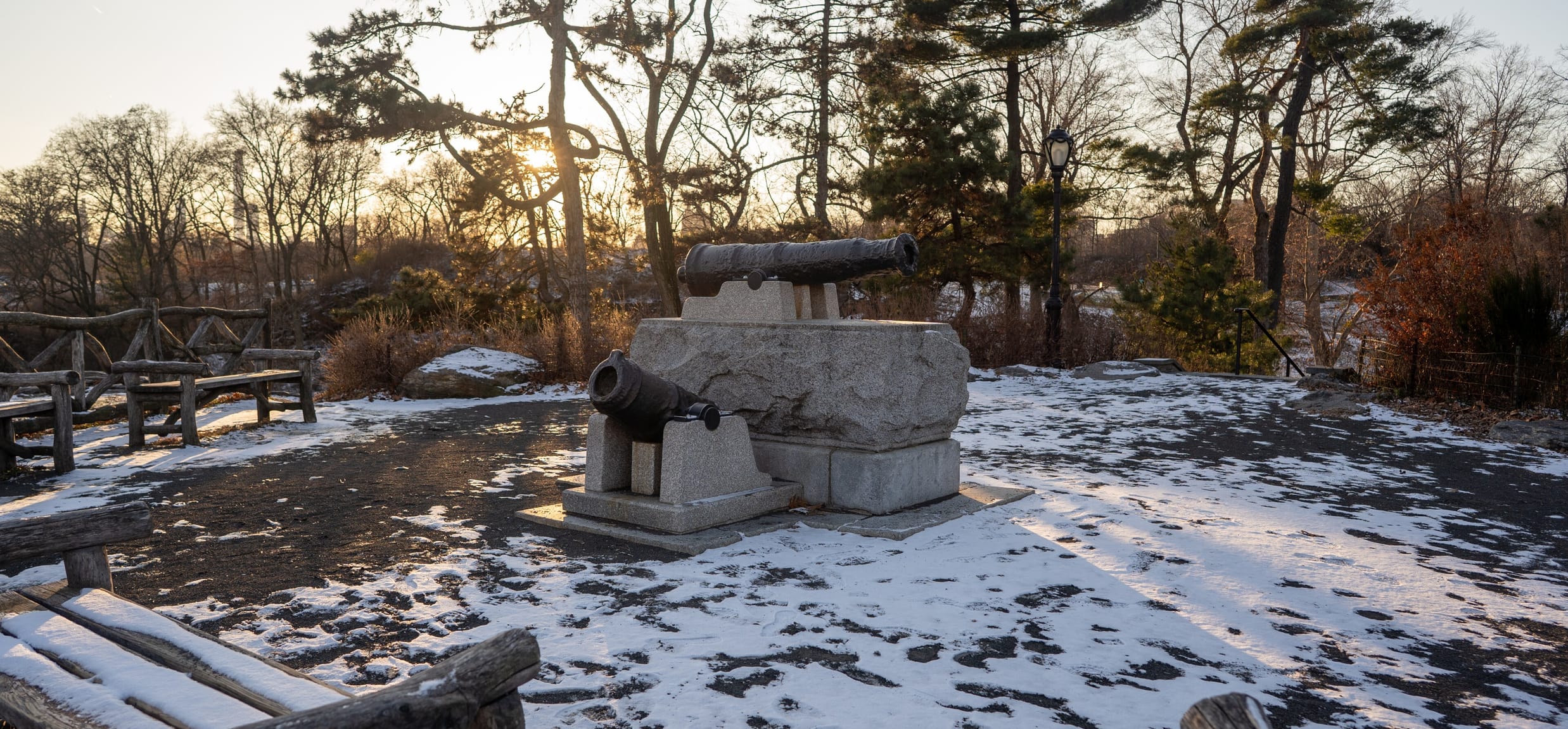Fort Clinton

Fort Clinton, once a site of strategic importance during the Revolutionary War and War of 1812, is a scenic overlook with sweeping views of the Harlem Meer and surrounding landscape.
Because of its height and views, this site was an important strategic position during two wars. In 1776, the British military built a fortification here following their invasion of Manhattan, as part of a defensive line extending west to the Hudson River. During the War of 1812, the American military rebuilt a fort in this location and named it Fort Clinton in honor of Mayor DeWitt Clinton, then mayor of New York.
During the War of 1812, Fort Clinton was connected to a larger fortification system that included two other forts: Nutter’s Battery to the west and Fort Fish to the southwest. The forts were connected by low earthen walls and linked to a gatehouse at McGowan’s Pass that controlled access to a local road. The defensive line was completed with a series of blockhouses to the west, one of which still exists in the North Woods, the only one remaining from this system. The attack never materialized, and the forts never saw battle; they were left to fall into ruin or were dismantled.
The designers of Central Park recognized both the scenic and historic value of this location and retained the remains of the fortification. They developed the site as a scenic overlook incorporating rustic fencing, benches, and a flagpole. The Central Park Conservancy rebuilt the overlook in 2014, recreating some of these historic details and restoring the surrounding landscape.
At that time, the Conservancy also reinstalled two cannons that had been in storage since the 1970s. The cannons have a rather curious history: they were never actually fired from this location. Recent research has confirmed that they originated on the Hussar, a British Royal Navy ship that ran aground on Hell Gate in the East River in 1780 while delivering supplies for the Revolutionary War. The cannons were donated to the Park in 1865 and put on display at a museum in the former convent of Mount St. Vincent, just south of this location. After the building was destroyed by fire in 1881, the cannons were unaccounted for until 1905, when Edward Hagaman Hall, a historian and preservationist, discovered them lying on the ground near Fort Clinton. Given the military history of this area, he assumed they were period artifacts and advocated to have them installed in this location. In 1906, the Parks Department installed the cannons at Fort Clinton on a granite base; they were later put into storage in the 1970s because they were vandalized.





